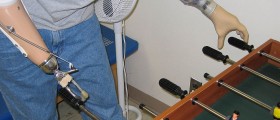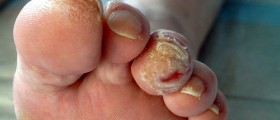
One of the first surgical procedures that has ever been performed was limb amputation, predominantly the amputation of the lower extremities. In fact, whole procedures which were described by Hippocrates himself are still used today. However, with the modern technological breakthroughs which took place over the years, various advancements appeared in terms of anesthesia, hemostasis and preoperative conditions.
Nevertheless, the main facts behind the removal of the limbs have remained the same. Thus, if you desire to learn more about this surgical step many do not consider to be a positive one, read on.
Amputation of the Limbs
Commonly, in the world of medicine and surgery, amputation of the limbs is considered to be a failure of treatment and a last resort. Moreover, the youngest members of the surgical team may perform these procedures due to the fact that surgeons do not want to bother themselves with it.
Commonly, amputation takes place once all other forms of treatment have proven unsuccessful. So, situations in which this can be a scenario are severe traumas, vascular diseases and tumors. Usually, the outcome of preserving the limb in these cases is death and families of the patient and the patient him/herself needs to be aware of this necessity.
Usually, the greatest problems behind amputation and living without the removed limb is the social stigma that this kind of life goes hand-in-hand with. Often, people without a part of their lower extremities are considered less functional than others or less capable than people who can use both legs. However, even though many people do not believe this, wearing a prosthetic limb can help one overcome all of these problems, living a normal life, performing all the actions that other people do.
Yet, in order for the procedure to be fully successful, it needs to be performed correctly, allowing proper fixation of the prosthetic limbs later. Additionally, using the prosthetic limb is not the same as using an actual one. Thus, learning how to walk may be a necessary process to go through once more. Also, people who use prosthetic limbs need to pay attention to their limbs, checking for any signs of pressure points, skin problems or other complications. Proper care and hygienic regulations go without saying.
Therefore, before actually living with a prosthetic limb, one needs to go through many treatments and listen to advice given by health professionals such as surgeons, primary care physicians, physical therapists, social workers and prosthetists.
Is There a Way to Prevent Amputation?
One of the best possible ways of escaping amputation of the lower extremities is by following a specialized program made for these purposes, called the Lower Extremity Amputation Prevention or LEAP. This program was developed by the HRSA National Hansen's Disease Program in 1992.
Basically, the program requires you to undergo foot screening every year, especially if you suffer from diabetes since, in this case, you are prone to vascular insufficiency in the area. If any loss of protective sensation it present, foot problems may appear without the person ever noticing them before it is too late.
The special screening for these purposes focuses on delivering a predefined set of force onto the foot. During this exposure, the doctor observes the reaction of the patient.
The next step in the program requires patient education regarding the skills necessary for preventing amputation through self-management and responsible conduct. The third step is quite similar to this one, since it encompasses the need for self-inspection taking place every day. By observing and assessing the health of your feet, you are taking the protective initiative, promoting health, noticing problems early and seeking timely treatment.
Some of the early signs of problems may be blisters, redness, swelling or some problems regarding the toenails. Either way, detecting these on time is crucial for removing the problems causing them before it is too late.
Since your feet get in contact with the footwear quite a lot, choosing the right shoes is crucial for keeping your feet healthy. We all have unique feet which have their own shapes, arches and other characteristics. Therefore, regardless of the size, some footwear may not be suitable for all. If you have health problems that could lead to lower limb amputation, you are advised not to wear heels, shoes with vinyl tops, narrow boots or shoes leaving little place for the toes or, simply, all other types of ill-fitting footwear.
Ultimately, simple feet problems should be dealt with immediately, as soon as you notice them, regardless of the ignorable nature they might have.
All in all, amputation of the limbs is a process which manifests through the physical removal of a part of a limb or the whole limb. This takes place once all other options have proven ineffective. Thus, this step is rarely considered a treatment. Rather, it is a life-preserving necessity which changes the lives of those who experience it, but allows them to enjoy life for many years to come.

















Your thoughts on this
Loading...